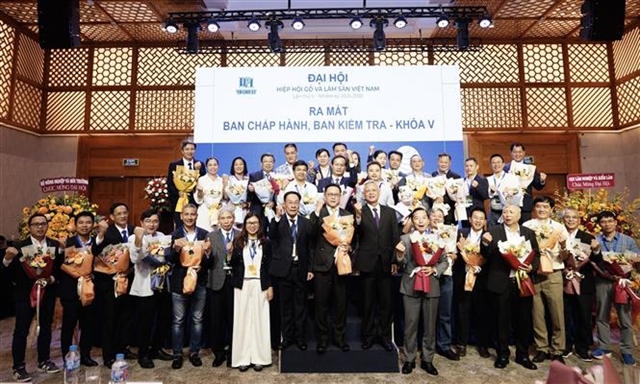 Life & Style
Life & Style


|
| Processes of making dó paper are re-enacted at the new tourist attraction in Tây Hồ District, Hà Nội. VNA/VNS Photo Minh Ngọc |
HÀ NỘI Tourists in Hà Nội can learn about the traditional craft of making dó (poonah) paper by visiting a new tourist attraction in Tây Hồ
Bưởi Ward, formerly known as Yên Thái Ward, used to comprise of Hồ Khẩu, Đông Xã, An Thọ, Yên Thái, Nghĩa Đô villages that produced poonah paper for a variety of purposes like giấy sắc used for writing the king's decrees, giấy lệnh used for writing royal commands and giấy bản to serve the daily needs.
According to the description by a Frenchman named Henri Oger in his book Mechanics and Crafts of the People of Annam, traditional dó (poonah) paper in the Bưởi region is described as a lightweight, durable and does not smudge plus is resistant to pests such as insects or mould.
Poonah paper is also famous for its durability, which can last for hundreds of years, thanks to the characteristics of the fiber and the entirely handmade production process, without the use of chemicals.
Due to these qualities, it was used for printing scriptures, writing texts, printing folk paintings, and, most notably, royal proclamations and decrees during the feudal dynasties in Việt Nam.
Until now, many temples, pagodas, and villages still preserve the royal seals made on poonah paper.
In the 1990s, the craft of making poonah paper in the Bưởi region was still preserved and produced by cooperatives. However, by the early 2000s, when the cooperatives were dissolved, the art of poonah paper-making was completely lost in the Bưởi region, specifically in Bưởi Ward, Tây Hồ District, as it is known today.
To develop the tourism industry associated with historical-cultural heritage and scenic landscapes, as well as traditional craft villages in Tây Hồ District from 2020 to 2025, the People's Committee of Bưởi Ward has been assigned the task of constructing and implementing the project "Organisation and exploitation of a cultural tourism service sites and the restoration of the traditional craft model of dó paper-making," using social funding.
According to Vice Chairman of the People's Committee of Tây Hồ District, Nguyễn Thanh Tịnh, the new tourist attraction in the district is expected to not only introduce but also preserve the values of the traditional poonah paper-making craft.
“It will also serve as a recommended destination for residents and tourists in Hà Nội, and a venue for organising extracurricular classes and educational tours for students from various schools within the district,” he added.
The tourist attraction, at 198 Trích Sài Street, Bưởi Ward, introducing the traditional craft of dó paper-making is located in a spacious area, overlooking West Lake. The area exhibits woodblocks for printing poonah paper, archive photos showing the production process, the materials and the final products.
The site also recreates the various stages of poonah paper production where tourists can join in the production process and a designated area for traditional cultural and artistic activities. VNS




